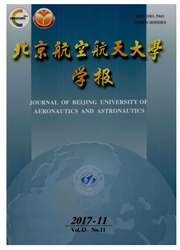

 中文摘要:
中文摘要:
In-Parameter-Order (IPO ) 算法是广泛地使用的策略因为其目标是揭示差错的为组合测试的软件测试套房(CT ) 的构造在参数之中由相互作用被触发。IPO 的变体被显示了在经常不比知道的最小的测试套房大得多的时间的合理数量以内生产测试套房。当一间全部测试套房被执行时,为一些从 t 方法相互作用产生的所有差错修理了 t 肯定被发现。当测试一次是执行的时,尽早检测一个差错不管多么是合乎需要的以便它能被修理。水平、垂直的生长地址的基本 IPO 策略测试套房尺寸,然而并非差错的早察觉。在这份报纸,在 IPO 的生长策略被修改试图均匀地越过测试散布每个参数的价值。和我们增加的改组策略,到 IPO 的这修正戏剧性地改进差错察觉的率(平均在 31% 改善了) 。而且,我们的修正总是减少产生时间(2 平均更快预定) 并且在一些,情况也减少测试套房尺寸。
 英文摘要:
英文摘要:
The In-Parameter-Order (IPO) algorithm is a widely used strategy for the construction of software test suites for combinatorial testing (CT) whose goal is to reveal faults triggered by interactions among parameters. Variants of IPO have been shown to produce test suites within reasonable amounts of time that are often not much larger than the smallest test suites known. When an entire test suite is executed, all faults that arise from t-way interactions for some fixed t are surely found. However, when tests are executed one at a time, it is desirable to detect a fault as early as possible so that it can be repaired. The basic IPO strategies of horizontal and vertical growth address test suite size, but not the early detection of faults. In this paper, the growth strategies in IPO are modified to attempt to evenly distribute the values of each parameter across the tests. Together with a reordering strategy that we add, this modification to IPO improves the rate of fault detection dramatically (improved by 31% on average). Moreover, our modifications always reduce generation time (2 times faster on average) and in some eases also reduce test suite size.
 同期刊论文项目
同期刊论文项目
 同项目期刊论文
同项目期刊论文
 期刊信息
期刊信息
